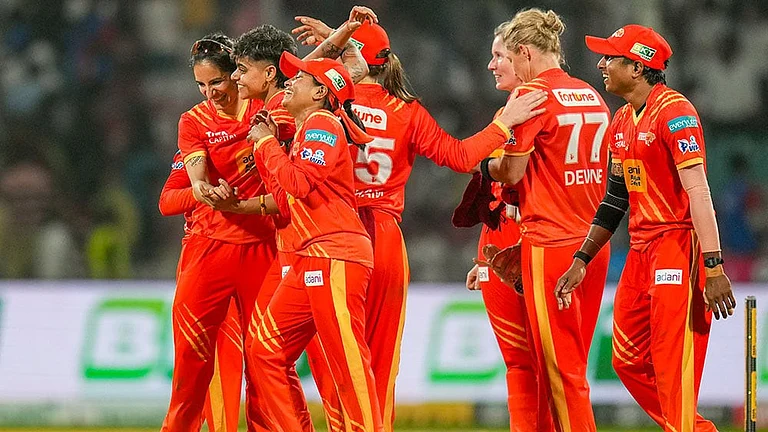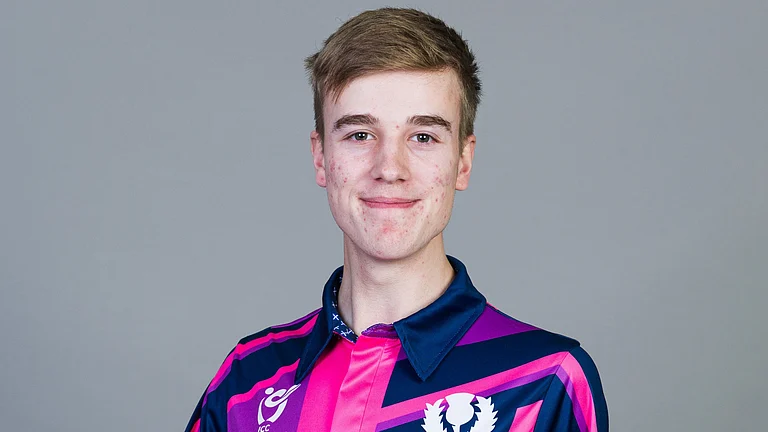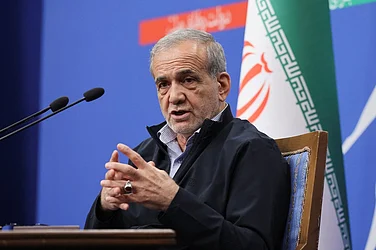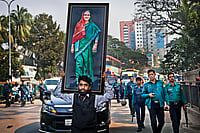Ukraine has suffered devastation from the war unleashed by Russia in February this year. The invasion was mainly to get a pro-Moscow government installed in Kyiv and stop the North Atlantic Treaty Organization (NATO) expansion to Russia’s doorstep. President Vladimir Putin is hated in Washington for his strong-arm tactics and his success in getting Moscow to pull much above its weight in international affairs.
The Cold War may be over, but the animosity between the United States and a much weakened Russia is being resurrected, more so since Putin emerged as a powerful figure after a succession of weak leaders following the breakup of the Soviet Union. As long as Russia remained weak and distracted at home, Washington had no problems. But over 22 years of Putin’s rule, sometimes as president or sometimes as prime minister, he has resurrected the country’s image and made Russia a player on the global stage. The earlier cooperation between Russia and the US broke down decisively after the annexation of Crimea in 2014.
As a consequence, the annexation convinced the US and Europe that Russia has shed none of its Cold War belligerence. With Joe Biden as president, a man whose political career spanned the decades of intense rivalry between the US and the former Soviet Union, the Cold War has now been revived. In fact, Russia took back what it gave to Ukraine in 1954. Crimea was gifted to Ukraine, which was then part of the Soviet Union, by Soviet leader Nikita Khrushchev to strengthen brotherly ties between them.
Enemy at the gates
Basically, the war in Ukraine is all about the defence architecture of Europe and Russia’s fears that the continued expansion of NATO, which began much before Crimea, threatens its security. NATO’s inclusion of Ukraine would for Russia mean the ‘enemy’ is literally at the gates.
NATO is a military alliance formed to protect Europe from communism soon after the end of the Second World War, when the ideological debate between capitalism and communism was at its height. The US and the former Soviet Union were fighting proxy wars across continents. After the devastation of the two World Wars, Europe wanted to be in a position where it would never be subject to another war. Fear of the Communist Bloc threatening the security of Europe was very real in those early days. The military alliance between European powers and the US and Canada was to act as a bulwark against attempts to push the ideology of communism into Europe. But the decisive victory of capitalism over communism, with the unification of Germany and the breakup of the Soviet Union in 1991, should have put an end to such concerns.
Russia wanted a commitment from the West that NATO would not expand. Mikhail Gorbachev, who presided over the dissolution of the Soviet Union, did not press for any written commitment from the US and European powers to halt NATO expansion. Gorbachev had immense trust in the verbal assurances, which mean little in the world of international diplomacy. In the euphoria that followed the end of communism and the new bonhomie between Russia and the US, Moscow did not press for more.
After the Russian leadership was beguiled, NATO has steadily made inroads into all the former Eastern Bloc countries. It began in 1998, with Poland, Hungary and the Czech Republic, among the Warsaw Pact countries, becoming NATO members. Since then, more and more countries have joined the transatlantic defence pact.
It is no secret that behind the US push and support to Ukraine is its aim to remove Putin from power and permanently weaken Russia, so it is never able to attack another country. Washington has the support of most European countries that feel threatened by Moscow’s predatory moves. Some U.S. diplomats have, though, warned against NATO expansion in unambiguous terms.
George Kennan, himself a Cold War veteran and the man who first propounded the country’s containment policy against Russia, said in a 1998 interview to The New York Times after the first phase of expansion. “I think it is the beginning of a new Cold War. I think the Russians will gradually react quite adversely and it will affect their policies. I think it is a tragic mistake. There was no reason for this whatsoever. No one was threatening anybody else.” Madeleine Albright, former secretary of state in the Clinton administration, was candid in her memoir about the Russian reaction, “[Russian President Boris] Yeltsin and his countrymen were strongly opposed to enlargement, seeing it as a strategy for exploiting their vulnerability and moving Europe’s dividing line to the east, leaving them isolated.” Both Gorbachev and Yeltsin, regarded as pro-western leaders, were uneasy about the NATO expansion.
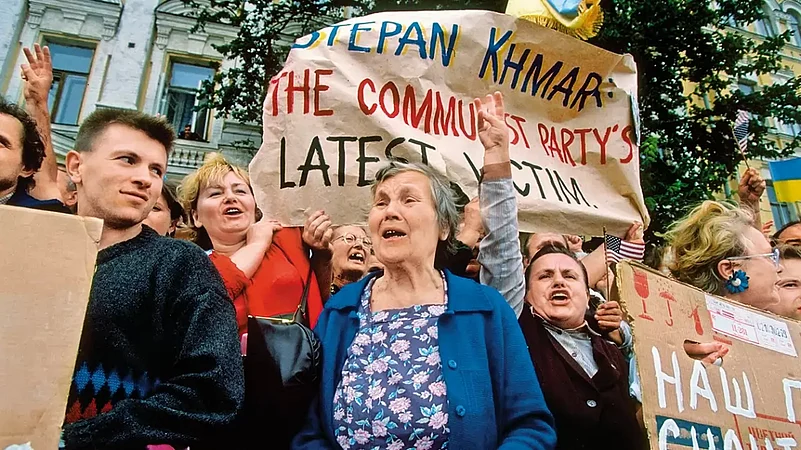
Another diplomat, Strobe Talbott, the then deputy secretary of state, also said, “Many Russians see NATO as a vestige of the Cold War, inherently directed against their country. They point out that they have disbanded the Warsaw Pact, their military alliance, and ask why the West should not do the same.”
In 2004, Bulgaria, Estonia, Latvia, Lithuania, Romania, Slovakia and Slovenia joined NATO. Moscow watched the developments with consternation. Addressing the Munich Security Conference in 2007, President Putin said, “NATO has put its frontline forces on our borders.” This represented “a serious provocation that reduces the level of mutual trust. And we have the right to ask: against whom is this expansion intended? And what happened to the assurances our western partners made after the dissolution of the Warsaw Pact?”
As the West continued to push towards Russia’s security zone, Putin acted. A year later in August 2008, provoked by the pro-western government in Georgia, Russia launched a military offensive. Though the conflict was over quickly, Putin had shown his hand and warned that Moscow would not stay silent if its security interests were compromised. In 2009, Albania and Croatia became NATO members.
Crimea annexation and its aftermath
The annexation of Crimea was the result of the Obama administration’s outreach and support to pro-western forces. The aim was to overthrow the Russia-backed government of president Victor Yanukovych, who backed out from signing a political association and free trade agreement with the European Union (EU) and chose instead to go for the Russia-backed Eurasian Economic Union. People took to the streets to protest and the US supported the move to remove Yanukovych. He finally fled Kyiv. Russia responded by annexing Crimea in 2014.
Moscow also supported the pro-Russian separatist uprising in the eastern Ukrainian region of Donbas that resulted in the declaration of the Russian-backed People’s Republics of Luhansk and Donetsk. The more aggressive Russia got, the more worried were the neighbours, who desperately wanted not only the West’s security umbrella but also links with the thriving economic opportunities offered by the EU and the US. Montenegro joined NATO in 2017 and North Macedonia in 2020. With almost all countries from the former Soviet Union under its belt, NATO is now aiming to get Ukraine into the western military fold. Kyiv is desperate to join NATO, and since the war on Ukraine began, neutral countries like Sweden and Finland have all applied for membership.
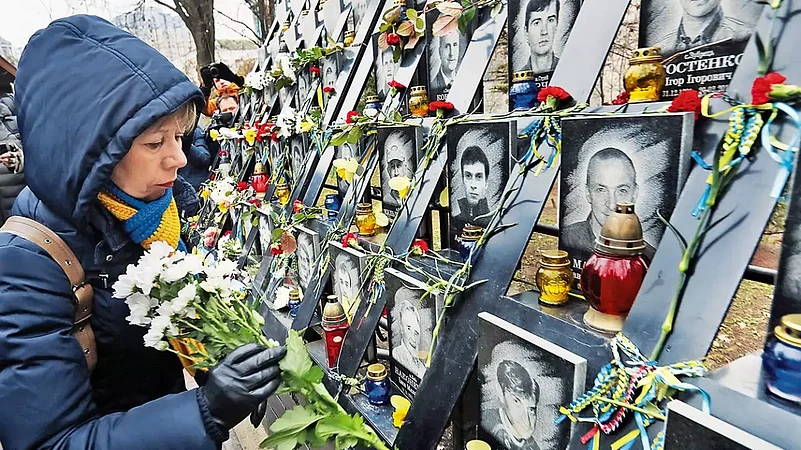
However, Putin’s attempts to counter NATO expansion through military intervention have backfired. Most non-NATO countries in Europe have chosen to come under the European defence umbrella as a safeguard against Russia. Putin appears to have completely misread the situation and in the process, the reputation of the Russian Army has been badly damaged by its inability to hold on to the territory in western Ukraine.
When will the war end?
Usually, when countries are at war there is a flurry of diplomatic activity to stop the bloodshed. But sadly, there has been no such effort in the case of Ukraine. Instead, the US and Europe were busy ensuring Kyiv got an abundant supply of sophisticated weapons to thwart the Russian Army and that sanctions against Russia work. Though Indian Prime Minister Narendra Modi has been calling for a halt to the fighting and getting back to the negotiating table, he had few takers. So, when will the war stop?
“The prospects of ending the Ukraine conflict look bleak. President Putin has said it will be ‘a lengthy process’. The EU has imposed a ninth round of sanctions on Russia. U.S. objectives of weakening the Russian militarily by engaging Russia in the protracted proxy war have not changed. The US and EU will not accept the annexation of Donbas by Russia. It will be seen as a major political defeat,’’ says former ambassador to Russia Kanwal Sibal. “Ukraine’s position is maximalist—recovery of Crimea—and Russia will not reverse the annexation as it will deal a decisive blow to Putin’s presidency.’’ That is the state of play at the moment.
Moreover, if the sweeping sanctions imposed by the US and western democracies hurt, there is no evidence of it as yet. Nandan Unnikrishnan of the Observer Research Foundation says, “Moscow does not look like the capital of a country at war. Everything is much the same. Restaurants are overflowing, shops are filled as there are no shortages, and as far as I could tell the effect of the sanctions has not yet kicked in. Perhaps, that will happen later.’’ A frequent visitor to Russia, Unnikrishnan has just returned from Moscow. He goes on to add, “There is an air of uncertainty since no one knows what the end game is. But there is no question of regime change or anger over the war at the moment.”
Since Ukraine’s independence in 1995, not only the fissures in relations with Russia but also differences between people living in the east and west of the country came to the fore. It became the focal point of rivalry between Russia and the US as both tried to shape Ukraine’s politics to suit their interests. The 2004 Orange revolution is a case in point, when street protests forced the election of Moscow-backed Yanukovych to be declared null and void. His reformist rival Viktor Yushchenko, backed by the West, became president. However, Yanukovych returned to power in 2010.
The animosity between Ukraine, a jewel in the crown for Russia during the Soviet era, and Russia is ironic as both share a heritage. But as it happens so often in history, people with a shared heritage often make the bitterest enemies. The tangled love–hate relations between Russia and Ukraine go back thousands of years.
Where a shared origin has no takers
Both countries trace their origin to Kyivan Rus, the first Slavic kingdom. Kyiv, Ukraine’s capital, was at the centre of the new state. Kyiv Rus is said to have been founded by three brothers, Kyi, Shchek and Khoryv, who belonged to an East Slavic tribe. This is why President Putin often says that Russians and Ukrainians are one people, a single whole. Foreign Minister Sergey Lavrov has also said that the differences between “…we Slavs will be resolved by us, no other country should interfere”.
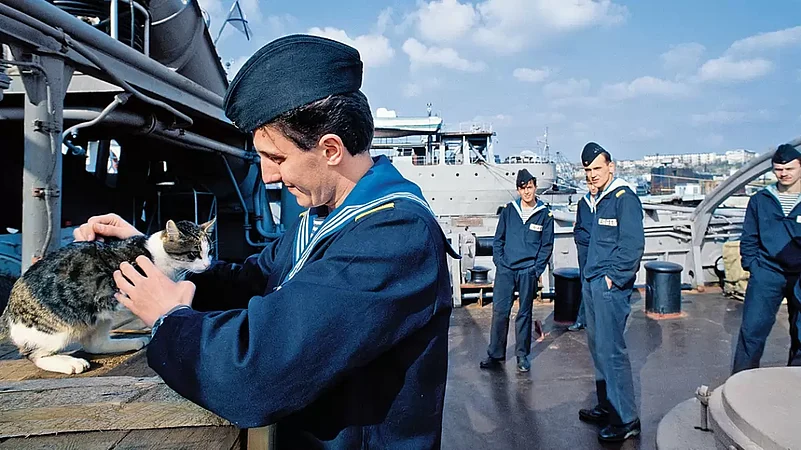
These sentiments are not shared by Ukrainians, more so people living in western Ukraine who, since Ukraine’s independence from Russia, have wanted to forge closer ties with Europe and the US. Russian speakers living in the east of the country have traditionally been closer to Moscow. The eastern areas were part of Russia much earlier than the west. Western Ukraine was ruled by Poland and Austro-Hungarian empire, exposing them to centuries of European, and not Russian influence. Western Ukraine is mostly Catholic and not part of the Russian Orthodox church. Fault lines between east and west Ukraine have historical reasons.
Founded around 482 AD, Kyivan Rus underwent several invasions and divisions, with Mongols conquering the country in the 13th century. Later, Polish and Lithuanian armies invaded several times from the west. In the 17th century, war between the Polish–Lithuanian Commonwealth and the Russian Tsar brought lands to the east of the Dnieper River under the Russian imperial control. The east became known as the ‘Left Bank’, and land to the west of the Dnieper became the ‘Right Bank’, under Polish rule. Around 1789, the right bank of the Dnieper River, what is now western Ukraine, was annexed by Russia. The Czars tried to force the Russian Orthodox faith on Ukraine and banned the use of the Ukrainian language.
The Russian Revolution of 1917 naturally affected Ukraine and a civil war ensued. By 1922, Ukraine became a part of the communist-led Soviet Union. Stalin is said to have forced a famine on Ukraine, which like Russia is the granary of Europe. Thousands perished in the induced famine and peasants were forced to join the collective farms that were the hallmark of the communist revolution. Around 1930, Stalin began sending in Russian citizens to settle in Ukraine in a bid to solidify the Communist Russia’s hold on the country.
Independence from Russia led to the tussle between the pro-western and pro-Russian forces in Ukraine, which has now led to a tragic war where Ukrainian civilians have had to bear the brunt.
(This appeared in the print edition as "The Genie is Back")








